In this week's News Flash we hear how lasers might replace X-rays as a way to see inside the body, why poor quality ponds are threatening wildlife and how a failed experiment yielded a super-slippery coating. Plus, we delve into the genetic code of the extinct woolly mammoth, discover how firing lasers at nerves could vastly improve cochlear implants, and how a 'switchable' detergent could help to recycle nano-particles!
In this episode
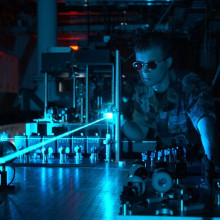
Laser sees straight through you
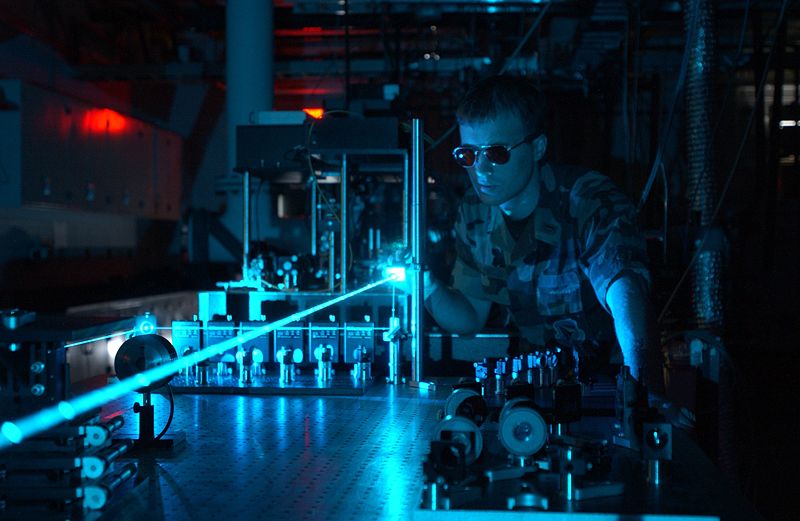 US scientists have developed a new way to image tissue in unprecedented detail but without resorting to harmful X-rays. Harvard researcher Mark Niedre and his colleagues, writing in this week's PNAS, describe how they have used short bursts of very intense laser light to produce three-dimensional images of mice, including animals with lung tumours. Previous attempts to use laser or visible light to image tissues has been frustrated by light scattering as it passes through the tissue, "rather like when you stick your thumb over a torch bulb and your entire finger glows red," says Niedre. This is because the photons (light particles) bounce about like a bullet ricocheting around a room as they pass through, and this produces a blurry image.
US scientists have developed a new way to image tissue in unprecedented detail but without resorting to harmful X-rays. Harvard researcher Mark Niedre and his colleagues, writing in this week's PNAS, describe how they have used short bursts of very intense laser light to produce three-dimensional images of mice, including animals with lung tumours. Previous attempts to use laser or visible light to image tissues has been frustrated by light scattering as it passes through the tissue, "rather like when you stick your thumb over a torch bulb and your entire finger glows red," says Niedre. This is because the photons (light particles) bounce about like a bullet ricocheting around a room as they pass through, and this produces a blurry image.
But the Harvard team have solved the problem by using ultrashort (picosecond) bursts of near-infrared laser light (which penetrates tissues very well), and recording only the first photons to pass through. This is because the photons that pass through the tissue the most quickly must have taken the shortest path and therefore been deflected the least. The team have even gone one step further and demonstrated that this technique, known as EPT or early-photon tomography can also be used to give biochemical clues about the nature of the tissue under scrutiny.
By injecting mice that had lung cancers with antibodies designed to glow in the presence of tumour tissue the team were able to pick up not just the location of the tumour but also reactive changes in the adjacent tissue. Significantly this adjacent tissue had previously looked normal when examined by CT scan. "We're able to image tissues at sub-millimetre resolutions and with the use of molecules like the antibodies we used in these experiments we can begin to find out important biochemical details about the tissues we're looking at; that's what makes this work so exciting," says Niedre.
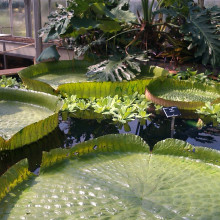
Ponds going down the pan
 A national survey of the countryside has shown that good quality ponds have vanished from many parts of the countryside, although there's actually more ponds in numerical terms. And this could spell disaster for wildlife.
A national survey of the countryside has shown that good quality ponds have vanished from many parts of the countryside, although there's actually more ponds in numerical terms. And this could spell disaster for wildlife.
The Centre for Ecology and Hydrology carry out a Countryside Survey in the UK every ten years, commissioned by Defra and the Natural Environment Research Council, and this one is the world's first national survey of the condition of ponds.
The results show that although the number of ponds in Britain has gone up by 11% since 1998, only 8% of them are currently in good condition, and that the quality of ponds went down between 1996 and 2007.
According to Dr Jeremy Biggs, Director of Policy and Research at the charity Pond Conservation, although ponds may seem insignificant compared to rivers and lakes, ponds have at least as much variety of wildlife, and provide a refuge for many endangered plants and animals. Many rare and delicate freshwater plants and animals depend on ponds, so the fall in quality ponds could be serious.
Although it's positive that the number of ponds in the UK has increased, we don't know how many of them will provide clean, unpolluted water for wildlife. Pond Conservation are coordinating a major Million Ponds Project to bring nice clean ponds back, and to start with they're planning on making 5,000 new ponds over the next four years.
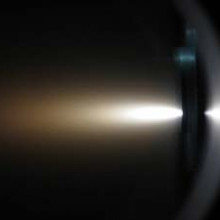
Super slippery material
If you are making a machine with moving parts you often want to make parts slide past each other efficiently. Normally this is achieved by covering the parts with oil or another lubricant which can significantly reduce the friction but this isn't that effective, and the lubricant can escape. There are also a variety of low friction coatings such as Teflon, which you can find on non-stick frying pans, and have been used to slide whole motorway slip roads around. However these are very soft and wouldn't last five minutes on a gear wheel.
Scientists from the Ames Laboratory in the US may have accidently discovered a material which could solve this problem. They were searching for a material to generate power when you heat one side, and one of the materials they tried was Aluminium Magnesium Boride (AlMgB14) this didn't work for what they were testing it on, and it 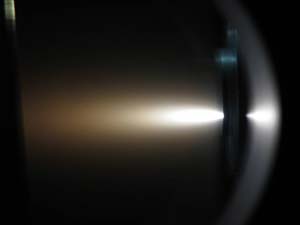 was extreemly difficult to cut and polish. Instead of being frustrated by this they investigated more closely and tried mixing it with titanium boride and found that it was extreemly hard, the third hardest material found so far after diamond and Carbon Boron Nitride, so it should be hard wearing. They also looked into how slippery it is and it seems to have a coefficient of friction of 0.02 that means that if you pushed down with 100N you would only have to push with 2N to be able to slide. In comparison teflon is more than twice as sticky so you would have to push with 5N and lubricated steel is 8 times stickier.
was extreemly difficult to cut and polish. Instead of being frustrated by this they investigated more closely and tried mixing it with titanium boride and found that it was extreemly hard, the third hardest material found so far after diamond and Carbon Boron Nitride, so it should be hard wearing. They also looked into how slippery it is and it seems to have a coefficient of friction of 0.02 that means that if you pushed down with 100N you would only have to push with 2N to be able to slide. In comparison teflon is more than twice as sticky so you would have to push with 5N and lubricated steel is 8 times stickier.
At the moment the material is expensive and difficult to produce, but if you just applied the coating to all the pump blades in the US the reduction in friction would save over 100 million pounds a year in reduced energy costs.
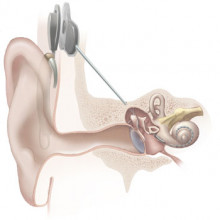
Hearing the Light
A breakthrough in the way laser light interacts with nerve cells could greatly improve the quality of hearing for people who require cochlea implants.
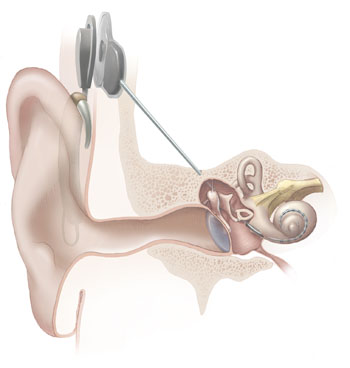 A healthy inner ear contains many thousands of hair-like cells which detect sound and pass a signal on to nerve cells, which then transport the signal to the brain to be de-coded. Damage to these cells as a result of illness, accident or just genetic defects can result in deafness. A cochlear implant takes the place of these cells, communicating directly with the nerve cells so someone who was formerly deaf can hear, and presently, cochlear implants are very effective - deaf children with implants can develop speech that is very close to that of hearing children.
A healthy inner ear contains many thousands of hair-like cells which detect sound and pass a signal on to nerve cells, which then transport the signal to the brain to be de-coded. Damage to these cells as a result of illness, accident or just genetic defects can result in deafness. A cochlear implant takes the place of these cells, communicating directly with the nerve cells so someone who was formerly deaf can hear, and presently, cochlear implants are very effective - deaf children with implants can develop speech that is very close to that of hearing children.
However, cochlea implants use about 20 electrodes to connect to nerves, which is very few compared with the 3000 or more hair cells in a healthy ear - this means that an implant will certainly improve hearing, but the hearing will still be poor, and many people with implants do not enjoy music and find it difficult to converse in noisy environments. Due to the way that tissue conducts electricity, you can't just increase the number of electrodes, as they will interferre with each other and reduce the overall quality, for many years, this has put a limit on the quality of cochlear implants.
But now, a team from Northwestern University in Chicago, led by Claus-Peter Richter, have announced at the Medical-Bionics conference in Victoria, Australia that they may have a way to shine some light upon the problem - infrared laser light to be precise.
For reasons that are not yet fully understood - laser light will simulate neurons - even though they do not contain light-sensitive proteins. Richter's team decided to see if this would be a better way of communicating with neurons in the inner ear, and knowing that the laser would not spread through the tissue as an electric pulse would, lasers could be a way to achieve much higher definition for implants. They tested this by shining a laser of infra-red light onto the neurons in the inner ear of deaf guinea pigs, while monitoring the electrical activity in a region of the brain responsible for passing information from the ears to the brain cortex, called the inferior colliculus.
Not only did the lasers register a signal which shows that the deaf guinea pigs could hear - but the brain activity was very similar to that seen in hearing guinea pigs - suggesting that implants using lasers may be able to restore hearing completely!
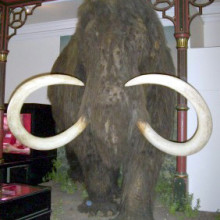
Woolly mammoths reveal genetic secrets
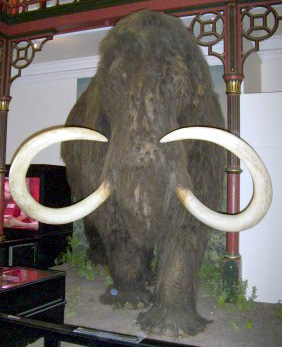 Scientists at Penn State University have made a giant leap, or should that be a slow lumber, forward in genetic research by sequencing the genome of the woolly mammoth. The team sequenced four billion bases, or letters, of DNA using the latest technology, and a new approach to read very old DNA - they also did it relatively cheaply. This is 100 times more data than for any other extinct species, although only around three and a half billion are actually mammoth, while the rest probably belong to contaminating bacteria or fungi. The researchers think the mammoth's genome is about the same size as that of the modern-day African elephant, which they used to figure out which of the DNA letters were likely to be mammoth, and which were contamination.
Scientists at Penn State University have made a giant leap, or should that be a slow lumber, forward in genetic research by sequencing the genome of the woolly mammoth. The team sequenced four billion bases, or letters, of DNA using the latest technology, and a new approach to read very old DNA - they also did it relatively cheaply. This is 100 times more data than for any other extinct species, although only around three and a half billion are actually mammoth, while the rest probably belong to contaminating bacteria or fungi. The researchers think the mammoth's genome is about the same size as that of the modern-day African elephant, which they used to figure out which of the DNA letters were likely to be mammoth, and which were contamination.
The scientists used DNA extracted from hair taken from a mammoth mummy that had been buried in the Siberian permafrost for 20,000 years, and another mummy that was 60,000 years old. The team used hair to try and avoid contamination problems, as it's easier to remove bacteria and fungi from hair than flesh. And hair also preserves the structure of ancient DNA better than bones, as the sturdy hair proteins encase and protect the DNA almost like plastic wrap.
By comparing the mammoth sequence to that of modern-day elephants, the researchers think that mammoths and their modern relatives separated around six-million years ago, about the same time that humans and chimpanzees separated. But unlike humans and chimps, which relatively rapidly evolved into two distinct species, mammoths and elephants evolved at a more gradual pace.
The team also found that woolly mammoths had a relatively low genetic diversity, meaning that all animals are quite similar, even those that were older. The data could also explain why mammoths went extinct - which might be useful to help currently surviving species that are on the brink of extinction. The researchers are also hoping to find the genes that could explain how mammoths survived in such cold environments. And it's another step on the way to potentially bring the woolly mammoth back to life, especially after the recent successes in cloning a mouse that had been frozen.
Reference: Miller, W et al (2008). Sequencing the nuclear genome of the extinct woolly mammoth Nature, 456 (7220), 387-390
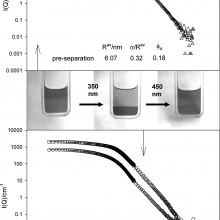
Switchable surfactants
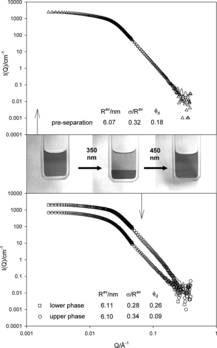 It is often said that oil and water don't mix, but if you have ever done any washing up you will know that you can make them mix by adding a detergent, which allows the water to dissolve all those stubbon stains. This sort of thing is often done in chemistry, possibly to allow some catalytic nanoparticles to a liquid they wouldn't normally dissolve in. This means that they can catalyse a reaction. The problem is then retrieving your expensive nanoparticles, because once you have made them mix really well stopping them is difficult. Normally this is done by using expensive centrifuges, spinning the mixture and causing the denser nanoparticles to sink to the bottom.
It is often said that oil and water don't mix, but if you have ever done any washing up you will know that you can make them mix by adding a detergent, which allows the water to dissolve all those stubbon stains. This sort of thing is often done in chemistry, possibly to allow some catalytic nanoparticles to a liquid they wouldn't normally dissolve in. This means that they can catalyse a reaction. The problem is then retrieving your expensive nanoparticles, because once you have made them mix really well stopping them is difficult. Normally this is done by using expensive centrifuges, spinning the mixture and causing the denser nanoparticles to sink to the bottom.
But Chemists based in the University of Bristol have developed a chemical which could do this. Normally it works like a detergent allowing droplets of water to dissolve in oil but if you shine ultra violet light onto it suddenly it ceases to be a detergent and dissolves in water again. The water droplets are now insoluble and will clump together and become easy to seperate again.
The chemical is a normal surfactant molecule which they have added
azobenzene to, which will put a kink into the molecule when exposed to ultra violet light changing its properties.
The really elegant feature is that if you illuminate it with visible light, the surfactant goes back to its original shape and properties and starts to work again, so you can recycle your nano particles again and again.










Comments
Add a comment